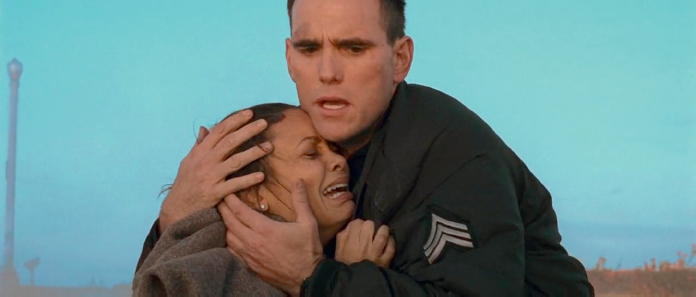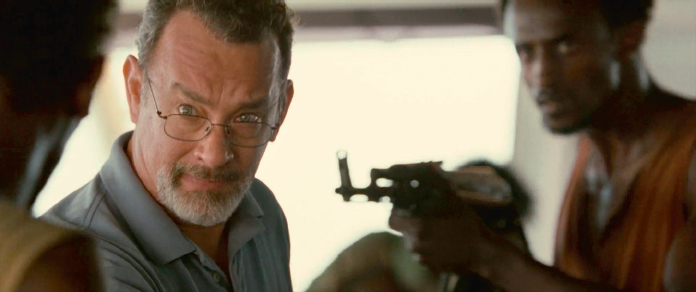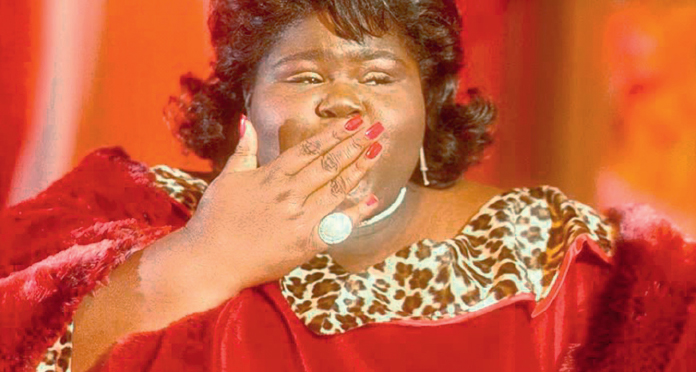Original Ideas
If you think of an idea for a movie yourself, it is called an original idea. That means it originated with you. This original idea can become the basis for all kinds of projects: movies, television shows, graphic novels, short videos, interactive games, books, and plays. An idea is just the beginning of something; how you choose to extend it creatively is based on your particular talents and your audience, what you are trying to communicate, and the medium that best suits the idea itself. In the case of your class project, you will be seeking a story that can be well told as a film, which means it should have strong characters, contain compelling visual elements, and be able to be told in a relatively few number of minutes.
As you come up with original ideas that you think may have screenplay potential, however, make sure you pause and take note of the difference between having an original idea for a story and how you specifically express the idea with your screenplay. As we will discuss later in this chapter, you will need to register and copyright your screenplays to protect them from being copied or stolen. But the raw conceptual idea itself, in most cases, is not what you will be trying to protect as much as the specific way in which you have expressed it with your story. For example, anyone is free to try and write a story about a historical event like the Iran hostage crisis or a mythical figure such as Hercules. But if your specific story comes anywhere close to the form or structure or characters, dialogue, or nature of the specific story owned by the studios that released Argo in 2012 or the Hercules action-
The best original stories come from your own awareness—
Coming up with original ideas can seem difficult, and you will probably consider and reject several of them before settling on one that merits the time and effort you’ll spend on your class film. There are many ways to explore movie stories—

Crash (2004), screenplay by Paul Haggis and Bobby Moresco, is based on Paul Haggis’s original story. An unconventional film made outside the studio system, Crash won Academy Awards for Best Picture, Best Original Screenplay, and Best Editing.
Beginning with an original idea has several advantages. The first is that you are not relying on another person’s work. You do not need to contact anybody to get permission to use an idea that is yours. (In any event, it would be unethical—
Another attribute of an original idea is that it can bring something new to the screen and be more fun for the audience. You have probably experienced movies that feel overly familiar, like a copy of something else. Audiences are bored with derivative work. They want and deserve something fresh, and they’re looking to you to provide it for them. Even if your theme or setting is familiar, your actual plot and characters can bring a fresh take to that theme.
ACTION STEPS
Brainstorming Ideas
Sometimes it seems as though our minds are just filled with ideas—
 Create a mind map. A movie-
Create a mind map. A movie-idea mind map is a diagram that begins with a character, incident, or place at the center, and then marks everything that comes off of it, like the spokes of a wheel. Each spoke can generate its own spokes as well. This puts your thoughts on paper, so you can look at it and discover the most valuable nuggets.  Use the 10-
Use the 10-minute trick. It doesn’t seem daunting if you don’t have to do it for very long. Set your alarm for 10 minutes and write down as many movie ideas as you can in this short burst of time. You’ll be amazed by how many you will come up with! Remember your best stories. Is there a story you find yourself telling over and over because it’s always funny or interesting or emotional? That story could be the basis for your class film; the fact that you tell it often means you probably already have a structure for the narrative.
Remember your best stories. Is there a story you find yourself telling over and over because it’s always funny or interesting or emotional? That story could be the basis for your class film; the fact that you tell it often means you probably already have a structure for the narrative. Keep a journal. Always have a place to jot down thoughts as they come to you, and record at least one notable experience or character you meet every day. If you begin your journal now, at the beginning of the term, it will be filled with ideas by the time you need to select your project idea.
Keep a journal. Always have a place to jot down thoughts as they come to you, and record at least one notable experience or character you meet every day. If you begin your journal now, at the beginning of the term, it will be filled with ideas by the time you need to select your project idea. Do it with friends. Set a specific time (and a time limit, usually 30–
Do it with friends. Set a specific time (and a time limit, usually 30–60 minutes) to talk about ideas for a particular character or incident with your classmates. During the session, resist the urge to critique contributions in order to encourage creative flow, free from judgment or negativity. Make sure someone in the group makes an audio recording of what is said, as written notes can be incomplete and memories are not often accurate.
Source Material
If you base your film story on something that someone else has created, then it is called an adapted screenplay, and the place where the story came from is called source material. Source material can take many forms. It could be a graphic novel like 300 by Frank Miller; a comic book like Spider-
Screenplays adapted from source material are among the most honored films in Oscar history. This is likely because the source material has already created the characters and the world in which the story takes place, endowing them with a multitude of interesting details, which makes the writer’s job different if not easier. Even when a story is based on historical events, the screenwriter may be asked to adapt the work from a written history, because a book can bring together a great deal of research as well as a point of view on the material. Such was the case with the film Captain Phillips (2013), which was a true story with a screenplay based on an autobiographical book.
Adaptation, though, can be a tricky challenge for a writer. Books and interactive games—
A good example of this difference can be found in the novel Push by Sapphire and the film Precious (2009), adapted from it. The novel is written in the first person, in the voice of Clarice “Precious” Jones, an obese, 16-

Tom Hanks, as Captain Richard Phillips, faces off against the Somali pirate Muse, played by Barkhad Abdi, in Captain Phillips (2013). Billy Ray adapted the screenplay from Richard Phillips and Stephan Talty’s autobiographical book, A Captain’s Duty: Somali Pirates, Navy SEALs, and Dangerous Days at Sea.

Precious, portrayed by Gabourey Sidibe, dances with flair in her first fantasy sequence in Precious (2009).
In the movie version, the filmmakers had to cast an actress in the lead role, creating a real image of Precious that wasn’t available in the book. The challenge, then, was how to reconcile how the external world views Precious with her own internal life as described in the book. To allow viewers into Precious’s head, screenwriter Geoffrey Fletcher invented fantasy sequences, providing a visual understanding for how Precious sees herself—
Intellectual Property
When dealing with any kind of adaptation, you must make sure you have the original creator’s permission to adapt the underlying work. That’s because all creative works are intellectual property—a legal term that means that creative works can be owned in the same way you can own a camera or a mobile phone. When you write a script in a professional setting, it is a best practice to make sure you can prove it is yours and when you wrote it, in the event someone later plagiarizes, or steals, your work. In the entertainment industry, this is done by either copyrighting your work or registering it with the Writers Guild of America, which is the professional organization for screenwriters, or both. (You don’t need to be a member to register your work.)
 REGISTER AND PROTECT
REGISTER AND PROTECT
You can protect your ideas, and prove that they originated with you, by registering them with the U.S. Copyright Office (www.copyright.gov) or with the Writers Guild of America (www.wga.org).
Although it is important to protect yourself against plagiarism, it’s also important to understand the concept of plagiarism. In order to prove plagiarism, you must prove that the offender had access to your work, which is why you must keep careful records about who has access to your material. Otherwise, it is quite possible that someone else came up with the same idea or story as you; indeed, many stories have strong similarities even though they were not stolen from someone else, especially adapted screenplays that often rely on different source material to tell the same story. All writers are describing versions of the same basic reality, so it is no surprise that stories often have common elements, albeit expressed differently.
Rights and Title Just as you should care about protecting what is yours, other people will care about protecting what is theirs. For example, if you want to base your class film on a story someone else wrote, you need to ask permission. If you get permission, it is called a grant of rights. Any grant of rights should be written down and signed by both parties because memories are imperfect and friendships can easily fray. This is not a needless complication; in the Hollywood landscape, studios have spent millions of dollars to acquire rights to big franchise characters like Superman and the X-Men, and some rights holders have similarly spent millions of dollars going to court when they thought their rights were being infringed. In today’s digital world this can apply to almost anything, even a landmark building, whose owners vigilantly will assert their rights to those iconic or trademarked images.
Because of digital distribution technologies, it is important to have all rights in a project in order to make a film—and in order to secure financing for the movie. “All rights” means everything: the right to make a movie, a television series, a series of books, interactive games, webisodes, and anything else. In fact, the legal language in rights contracts often contains a phrase that says the rights include “all rights now known or hereafter contemplated, for dissemination in all forms, on all devices, and in all media now known or hereafter devised, on Earth and throughout the Universe.” No one can say the movie business doesn’t think highly of itself!
When there is a clear link between the source material and works that derive from it, this is called the legal chain of title. “Title” simply means the right to do the work. For example, if you write a script, you own the title to it. If you give a director permission to make a movie of your script, you must also give the director title to make the movie, which is best done in a written document. Imagine a chain with many links, and you want to make sure the chain does not have any “broken links,” or places where there is not a continuous flow of rights from one party to another; this is chain of title in action. Chain of title emphasizes that the act of writing is in fact the act of creating intellectual property—property that is real, needs to be protected, and has legal status.

Man of Steel, Warner Bros.’s 2013 continuation of the Superman franchise, was subject to lengthy legal battles over rights. The courts decided in favor of the studio only eight weeks before the film opened. Studios spend tens of millions of dollars to acquire rights to well-known franchise characters—and millions more defending their rights in court.
 COMPARING AN ADAPTATION
COMPARING AN ADAPTATION
Choose a film that has been nominated for Best Adapted Screenplay. (You can find the most recent nominees at oscar.go.com/nominees.) Familiarize yourself with the source material, then compare it to the film. Find five things the filmmakers changed when adapting the source material into a movie. What do you think about the changes? Would you have done anything differently?
Fair Use Although you need to be cautious about using others’ work, at times it is possible to do so under a legal doctrine called fair use. Fair use, which is actually written into U.S copyright law, means that you can use parts of other works in certain ways. For example, it is generally safe to do a parody or satire of another work—you can usually do a parody of a Hollywood movie as long as it is clear you are doing a parody.
It is also fair to quote short passages from other works when you are critiquing or commenting on them. Here’s a fair quote: “The distinction between what is fair use and what is infringement in a particular case will not always be clear or easily defined. There is no specific number of words, lines, or notes that may safely be taken without permission.” Here’s the comment: That quote is from the U.S. Copyright Office’s documents, and we’re using it fairly. But the quote itself underlines the fact that the standards for fair use are hazy and vague, and may be applied on a case-by-case basis.
You or your friends may have had experiences in which you uploaded a video to YouTube only to have it taken down because it contained copyrighted music. It may seem fair to use the music, and maybe you only used it for a few seconds, but if the copyright holder complains, YouTube will take it down.
What are the best ways to deal with the uncertainties of fair use?
 Request and obtain written permission if you can.
Request and obtain written permission if you can. Learn your school’s policy on fair use.
Learn your school’s policy on fair use. Ask your teacher how the situation is usually handled in this class.
Ask your teacher how the situation is usually handled in this class.